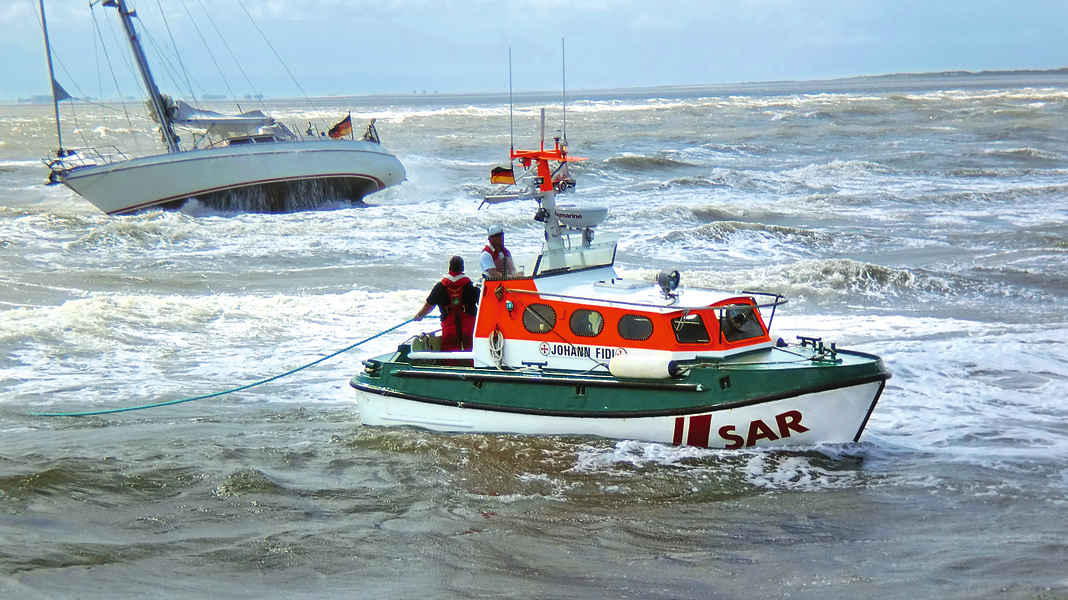Danger of accidents: 10 tips on how to safely navigate through sea calms
YACHT-Redaktion
· 12.06.2024

Sea races - the often narrow and strong-current water passages between islands or the mainland and sandbanks - pose a particular challenge for sailors. They harbour considerable dangers that come as a nasty surprise every year, especially to less well-prepared sailors.
Update 9.9.2024 The Federal Bureau of Maritime Casualty Investigation (BSU) has now re-investigated one particular case and has now published its findings in a revised form. In 2021, the yacht "Silja" had an accident between Baltrum and Langeoog and one sailor died. However, this does not result in any new instructions for sailors.
10 tips for safely navigating in a sea anchorage
The combination of strong currents and shallows makes navigation extremely challenging. Not only does every sea inlet have its own special features, but they are also in a constant state of natural change. As it is often only possible to find reliable information with considerable effort, it is important to observe a few basic rules of behaviour. The Federal Bureau of Maritime Casualty Investigation (BSU) therefore recommends the following:
- Always sail with the tidal current.
- If you want to sail round the outside of an island, plan both Gatt passages carefully.
- Do not navigate in the dark or in difficult visibility conditions.
- In principle, every sea channel should be navigable in moderate, onshore winds of 3 to 4 Beaufort and the associated swell with incoming water and more than half tide. Exception: A high swell has formed.
- Always avoid the constellation of current against wind! From a wind force of 5 Beaufort it can be dangerous for sailing yachts.
- Pass the barre - a sand or mud bank - at high tide (plus/minus two hours).
- Always manoeuvre within the buoyed fairway.
- A sailing boat should only sail into a sea anchorage under sail if there is sufficient space to leeward at all times.
- When sailing downwind, if possible only sail under headsail to reduce the risk of jibing and windward yaw.
- An engine - if available - should always be ready to start or even be running to keep the boat on course or to manoeuvre it out of a sudden dangerous situation.
What are sea slips?
Sea channels are naturally dynamic and often unpredictable current channels through which seawater flows back and forth incessantly due to tides, storms and currents. Their depth and width can change considerably due to sediment displacement and constant erosion. Well-known examples are the Norderneyer Seegatt and the Zandergatt in the North Sea.
The current channels are considered a very challenging area for sailors, and it is not uncommon for disastrous accidents to occur. This is because shoals can also move into the fairway after storms. The official nautical charts indicate the areas as "highly variable". The German Maritime Search and Rescue Service (DGzRS) warns against the Schluchter fairway in particular. This should "only be navigated by very experienced local sailors who are very familiar with the special sea conditions of the Norderneyer Seegatt".
Special dangers of the East Frisian sea races

- Strongly changing currents: Especially in the Schluchter and the other East Frisian sea channels, the current conditions can change drastically within a short space of time. If you are unprepared, you can quickly get into trouble.
- Sandbanks and tideways: The sometimes rapidly shifting sandbanks and tideways make navigation incredibly challenging. At low tide, they can ground boats, while at high tide, orientation is difficult.
- Tidal currents: At high and low tide, extreme currents sometimes arise, which can be particularly dangerous in unfavourable winds and waves.
- Wave formation: The transition from solid land to deep water often leads to an abrupt and steep wave formation. These "standing waves" can easily cause distress for small and medium-sized boats.

